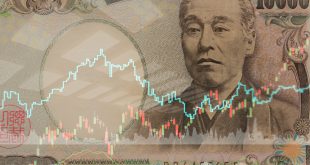As of next January, a recession is predicted to hit the US economy as investment and production decline. According to a press release from the Conference Board, the Leading Economic Index (LEI) fell 0.8% in October and 3.3% over the previous six months, marking the 19th consecutive m-o-m decline.
The report includes a number of indicators that, when combined, suggest that a recession will soon hit the US economy and that the real gross domestic product will only grow by 0.8% by 2024.
Since income has not kept up with inflation and many households have depleted their pandemic savings, the two most concerning indicators are low consumer expectations and tighter credit conditions.
This causes the economy to contract, which is consistent with the decline in retail sales that we witnessed in October. October’s consumer sentiment index score of 63.8 index points was much lower than the 71.5 points recorded in July and the 79 points recorded in January 2021, the month President Joe Biden took office.
October saw only 150,000 new nonfarm payroll jobs added in the US, 30,000 fewer than predicted and far fewer than the 297,000 added in September. Jobless rate increased slightly to 3.9%. The Federal Reserve Bank of St. Louis reports that the labour force participation rate is still below levels observed prior to the COVID-19 pandemic, having dropped to 62.7% in October from 63.3% in February 2020.
October saw a small month-over-month and annual decline in the Leading Credit Index, a sign of tighter credit conditions. In response to high inflation, which peaked at 9.1% in June 2022, the Federal Reserve set its federal funds rate at a range of 5.25% and 5.50%, which has put pressure on credit conditions.
Taking these distortions into consideration could put the start of a recession around year’s end. The yield curve, which compares the interest rate on 10-year Treasury bonds to the federal funds rate and can be used to predict recessions if it inverts due to investors moving to safer assets, has also been impacted by the Fed’s rate hikes.
The LEI’s most negative indicator, accounting for 1.22% of the overall decline, was the Index for New Orders, which gauges how much industry is buying in advance of future demand.
The national debt has reached an unprecedented peak of over $33.7 trillion and is expected to rise further as a result of the government’s massive deficits. The government paid $659 billion in interest on the U.S. sovereign debt in fiscal year 2023, and that amount might rise to $659 billion in 2024.

 Noor Trends News, Technical Analysis, Educational Tools and Recommendations
Noor Trends News, Technical Analysis, Educational Tools and Recommendations




